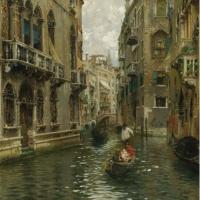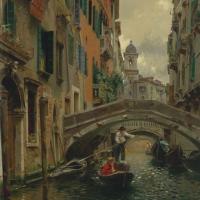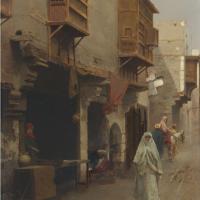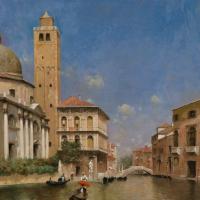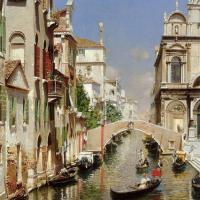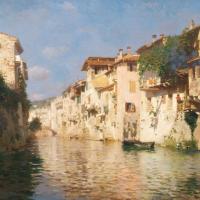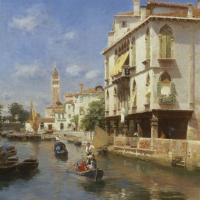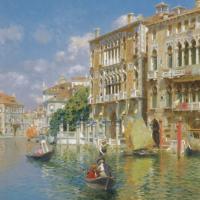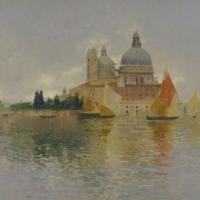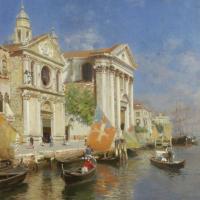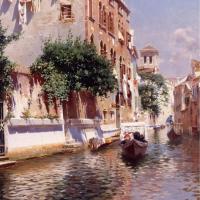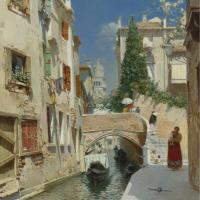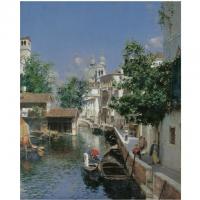Rubens Santoro
A Quiet Canal
$480.00
A Street In North Africa
$480.00
A Summer's Day In Venice
$480.00
Canal A Venise .Bmp
$480.00
Canale Dell Acqua Morta
$480.00
Canale Della Guerra, Venice
$480.00
St. Apostoli Canal, Venice
$480.00
Rubens Santoro
Rubens Santoro (1859-1941)
Rubens Santoro (October 26, 1859 in Mongrassano, Province of Cosenza, Calabria- December 30, 1941 in Naples) was an Italian painter.
He moved to Naples at 10 years of age, to study literature, but his inclination was painting. He only briefly enrolled at the Neapolitan Academy, instead, real life was his model. His first work was a small and simple genre piece: A Girl who Laughs, exhibited at the Promotrice. Domenico Morelli took note and encouraged him.
He began painting landscapes at Granatello, where the painter Mariano Fortuny was visiting.
Santoro continually changed his vistas, painting in Torre Annunziata, Castellammare di Stabia, Procida, the Amalfi Coast, and Resina. During the long trips to the open countryside, he distracted himself by playing the mandolin. Many of his Amalfi landscapes were bought by the Goupil Gallery. Two were displayed at the 1877 Exposition at Naples: Marina di Maiuri and Grotta degli Zingari. At the Isle of Capri, he completed the following canvases sent to the 1880 Turin Exhibition: Marina of Naples; Pozzo; Zingara; Zingare; Cavalcavia; Monte Tiberio; Quiete (a half-figure of a woman); Giovinezza; and Vecchiezza. At Venice he painted the vedute: Cloister of San Gregorio; Via di Piccioni; Wooden House; San Barnaba; Ponte de' Turchetti; Al sole; Le lavoratrici di coralli; Blue House; and Grand canal. He moved to Paris, and after an excursion in England, returned to Naples even more prolific. Colnaghi, the art merchant of London, commissioned paintings for Stewart Gardner from the artist. His painting Verona exhibited at 1911 exhibition of Barcelona was awarded a Silver medal.
The painter Francesco Raffaello Santoro was his cousin.


